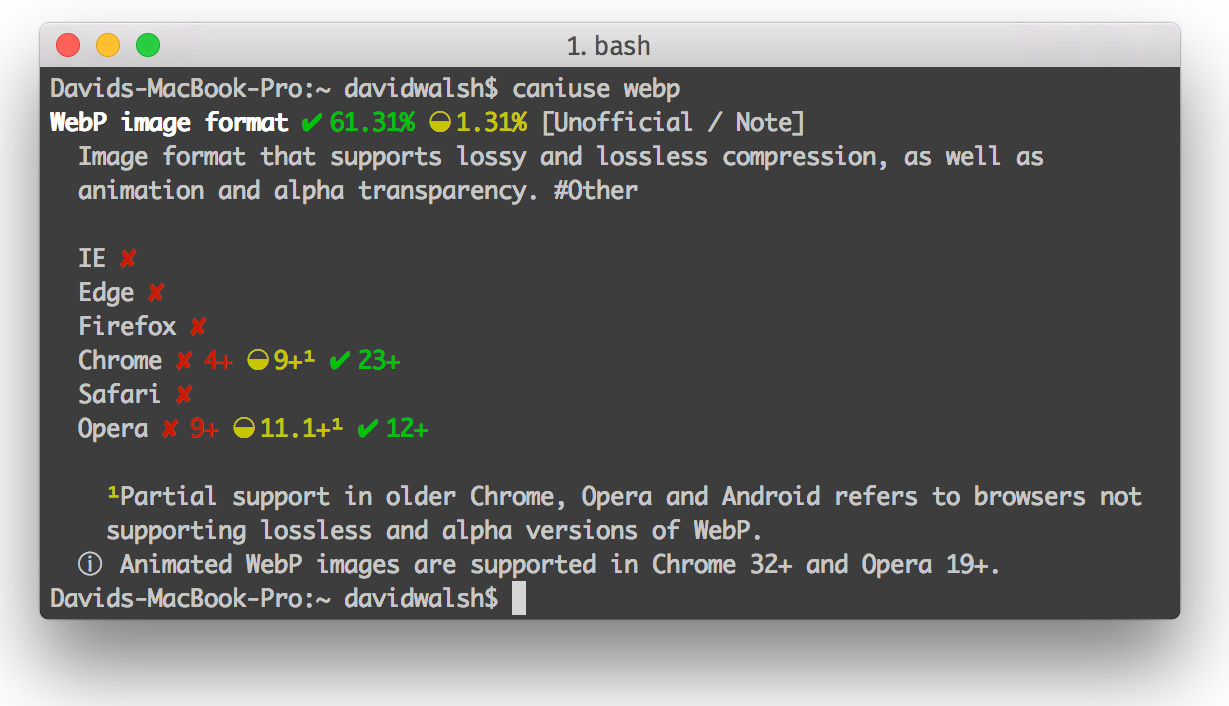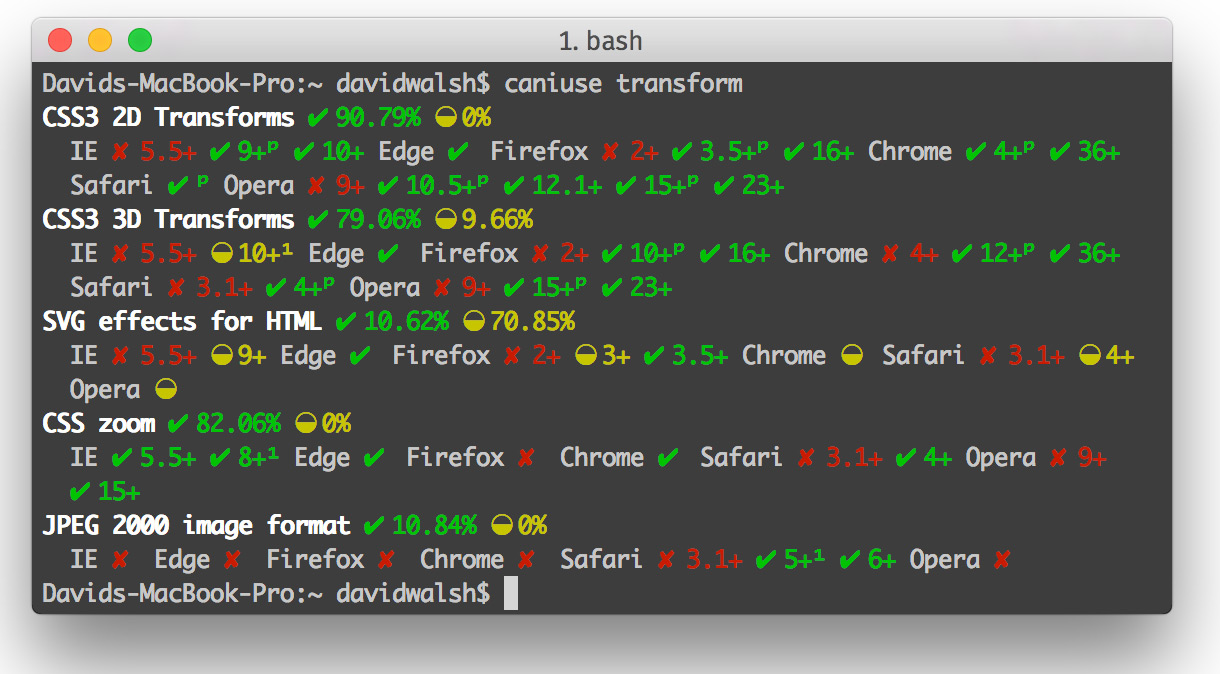CanIUse Command Line
Every front-end developer should be well acquainted with CanIUse, the website that lets you view browser support for browser features. When people criticize my blog posts for not detailing browser support for features within the post, I tell them to check CanIUse: always up to date, unlike posts on any blog. While I know to use the CanIUse website, I recently found out that Sam Gentle has an accompanying Node.js CanIUse module for looking up browser support.
To install the utility, use a typical npm install command:
# Install globally for less hassle
npm install -g caniuse-cmd
With the caniuse command available, you can look up feature support from the command line:


The display of results is pretty and it provides a listing of different matching features if the lookup is vague. And because we can get this information in an automated way, you can probably write a decent scraper with cURL and other tools.
![Chris Coyier’s Favorite CodePen Demos]()
David asked me if I'd be up for a guest post picking out some of my favorite Pens from CodePen. A daunting task! There are so many! I managed to pick a few though that have blown me away over the past few months. If you...
![Facebook Open Graph META Tags]()
It's no secret that Facebook has become a major traffic driver for all types of websites. Nowadays even large corporations steer consumers toward their Facebook pages instead of the corporate websites directly. And of course there are Facebook "Like" and "Recommend" widgets on every website. One...
![jQuery Countdown Plugin]()
You've probably been to sites like RapidShare and MegaUpload that allow you to download files but make you wait a specified number of seconds before giving you the download link. I've created a similar script but my script allows you to animate the CSS font-size...
![Google Font API]()
Google recently debuted a new web service called the Font API. Google's Font API provides developers a means by which they may quickly and painlessly add custom fonts to their website. Let's take a quick look at the ways by which the Google Font...







I need to get this hooked up to be an email responder bot! “Hey Steve does
${browserX}support${featureY}?” => auto respond ;-)How about just adding canIuse as a search engine to your browser, like so http://caniuse.com/#search=%s?
Simply typing “c webp” into my browser gives me even nicer formatted results.
Sadly the output is not very useful for automated processing. It would’ve been nice if this could be implemented in a gulp-task, scanning CSS for a defined set of supported browsers, and if a css-declaration wasn’t supported it would throw an error.
But as your example of ‘transform’ shows, it returns things like JPEG2000, so output parsing is required and tedious. Plus it seems that there is no option to print a simple boolean instead of fancy ticks and crosses.
There’s also this package available via npm.
https://www.npmjs.com/package/caniuse-api
Perhaps this would work better for that task.
Definitely an interesting article about this new npm tool, useful for those who like command line better then gui.